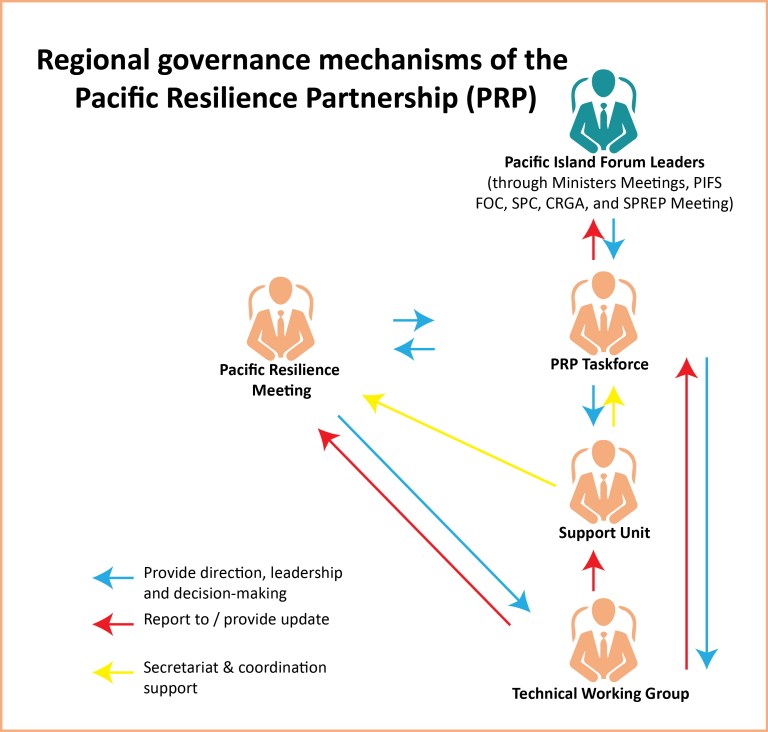About the PRP
Recognizing that building resilience has to be an inclusive, genuine and active multi-stakeholder partnership, Leaders in 2017 endorsed a set of governance arrangements for the Pacific Resilience Partnership (PRP) to support and facilitate effective implementation of the FRDP.
The PRP will build on and utilise existing mechanisms to avoid potential duplication and to ensure the direct involvement of decision-makers. To be successful the FRDP and PRP must be owned and led by countries and territories with the support and involvement of all stakeholders.
The Pacific Island Forum Leaders are at the peak of the resilience agenda. Through the Forum Officials Committee and the SPC and SPREP Governing Councils, the Pacific Leaders and Ministers’ meetings can direct action and respond to reports from the PRP.
The PRP includes:
- Pacific Resilience Meeting
- PRP Taskforce
- PRP Taskforce Support Unit
- PRP Technical Working Groups

Key Elements of the PRP
The PRP governance arrangements will be guided by the following enabling elements:
Inclusivity – successful implementation of the FRDP will depend on the ability of the PRP to engage and ensure effective participation of the different stakeholder groups through application of the Guiding Principles of the FRDP, which include a human rights based approach; prioritising the needs and respecting the rights of the most vulnerable including but not limited to women, persons with disabilities, children, youth and older persons; and integrating gender considerations and aim for a gender balance in all levels of the PRP.
Partnership – the focus of the partnership is to ensure collaboration, cooperation and coordination and the establishment of relationships based on mutual respect and responsibility to empower stakeholders’ resilient actions. This could be achieved through the free, continuous and consistent flow of information, sharing ideas and best practices.
Integrity and Quality – a commitment to the highest levels of integrity and quality in how resilience action is taken forward at sub national including community, national, sub-regional and regional levels. The resilience agenda must be based on the use of transparent, accurate and appropriate data and information; on open and transparent decision-making; on tools and approaches that are appropriate to be fit for purpose and context; on engagement and interaction that is genuine and lasting; and on a commitment to continuous learning and improvement.
Leadership – Leadership is called for at every level of decision making to promote accountability and transparency, encourage and engender appropriate, innovative implementation for resilience building at national and regional levels.
